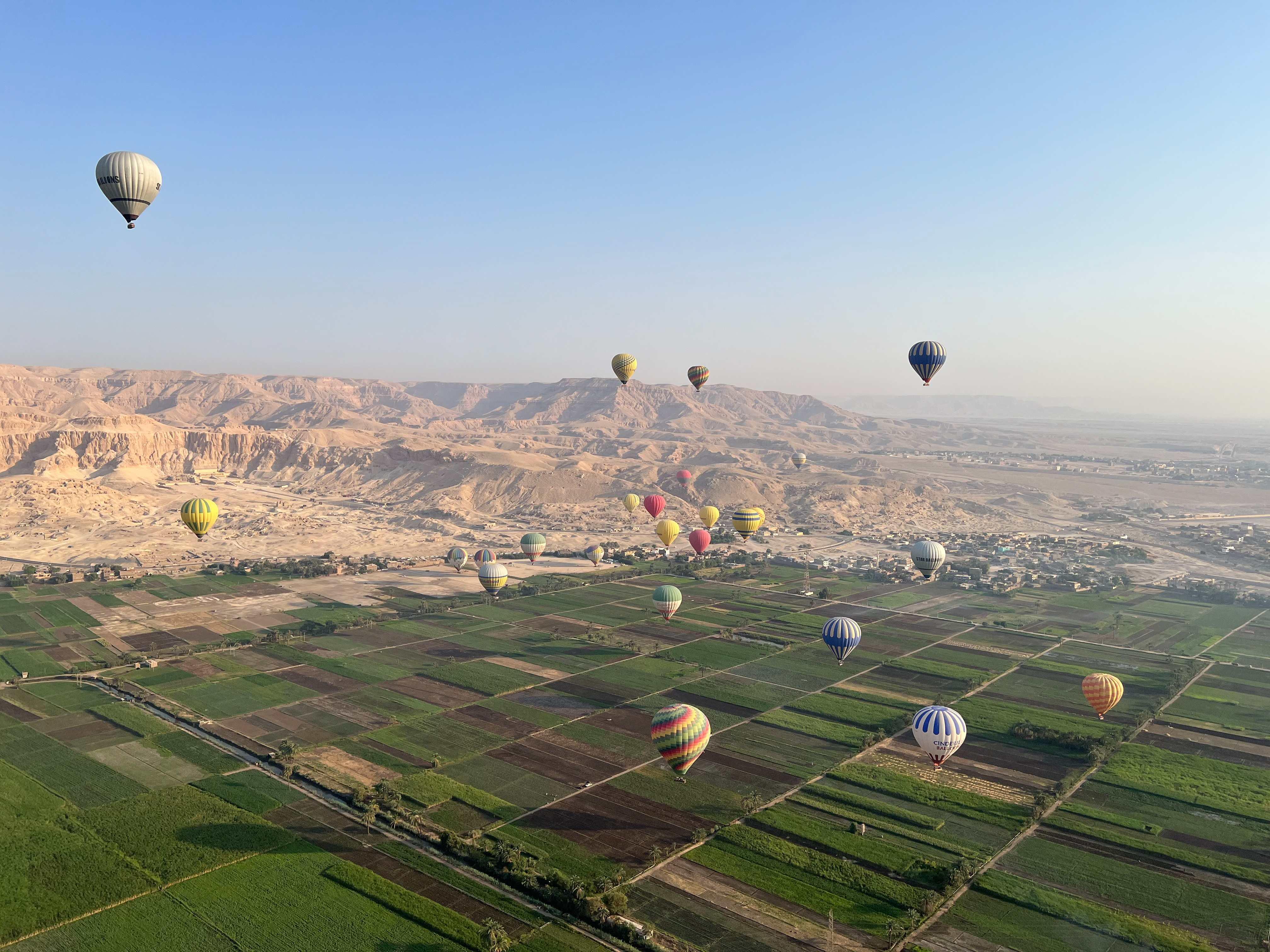
Honor Egyptian Culture Aboard Viking’s Newest Nile Ship
From the basket of a hot air balloon, two thousand feet above the Valley of the Kings; you can truly see why the Nile is the lifeblood of Egypt.
By Jennifer BillockJan. 10 2024, Published 3:35 p.m. ET
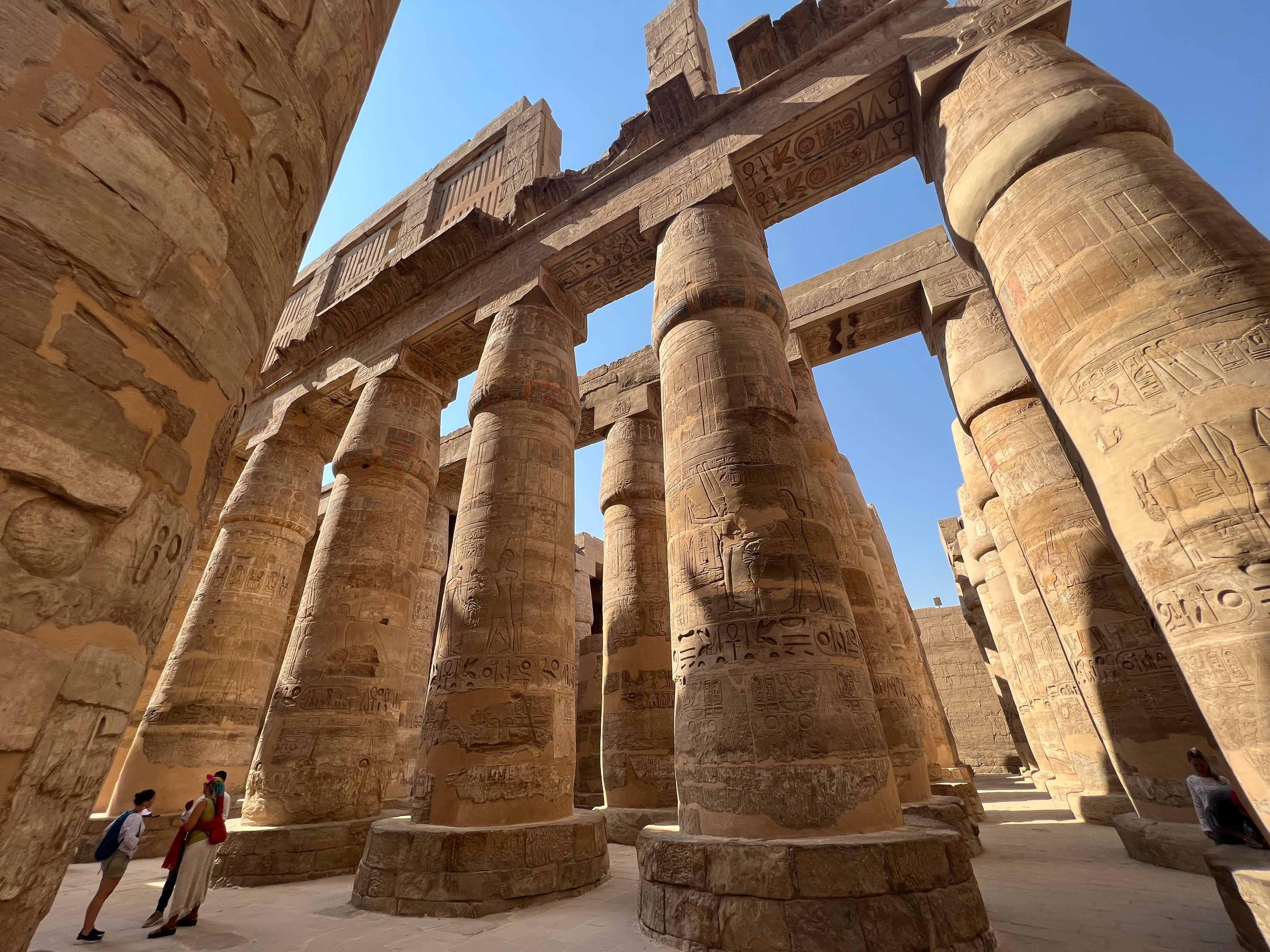
The massive streak of water sweeps across the landscape, surrounded by lush green on either side that abruptly fades into light brown desert dust. Ruins rise up from the areas further inland; monumental angular shapes with clear repetition in style. Statues of pharaohs with crossed arms stand guard over the temples.
Heading back toward the Nile, you can see the tall sails of feluccas, captained by local sailors, floating past a sprinkling of cruise ships. Among them, Viking Cruises’ newest Nile ship, the Aton.
The newly-launched Aton sails the 12-day Pharaohs and Pyramids itinerary, hitting six stops from Luxor and back, with air connections to Cairo. The design and architecture of the ship bring Egyptian culture from the surrounding verdant and arid landscapes all the way on board, starting from the moment you walk into the atrium, where four identical floor-to-ceiling columns lead you into the main space.
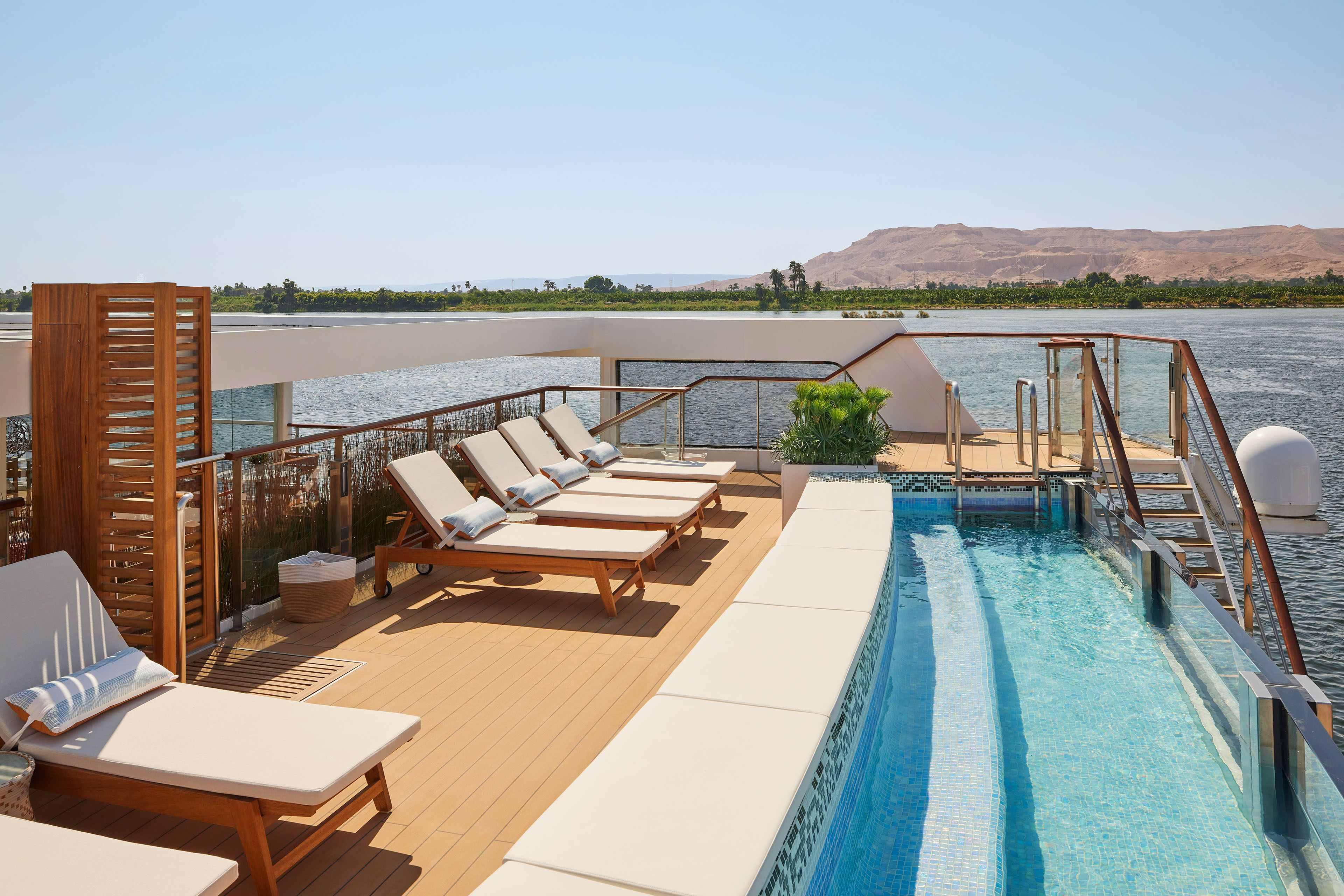
“[With] Egyptian architecture, you kind of come away with two or three things,” says Richard Riveire, the ship’s godfather, architect, and one of the founders of design firm, Rottet Studio. “You come away with this idea of monumentality, and the repetitiveness of things. And that idea made that atrium happen.”
The columns in the atrium evoke feelings of being at Karnak Temple; a place packed full of massive, intricately carved and colored pillars. It’s a step away from Viking’s standard design, which is all about smaller-scale intimacy and providing spaces that feel private even though you’re surrounded by at least another hundred people. The Aton was custom-built for just Nile sailings, so Riveire truly wanted to embrace the surroundings in his design.
A desert landscape with pops of color comes into the ship’s design as well. In Cairo, as you drive down the highway to get to the pyramids, you’ll see buildings that look like they have been torn in half, with painted walls in bright colors facing the road. Back when the highway was expanded, the government tore down the buildings that were closest to the construction area, leaving on display these spaces that were decorated by the former residents, amid a sea of brown buildings and brown sand.
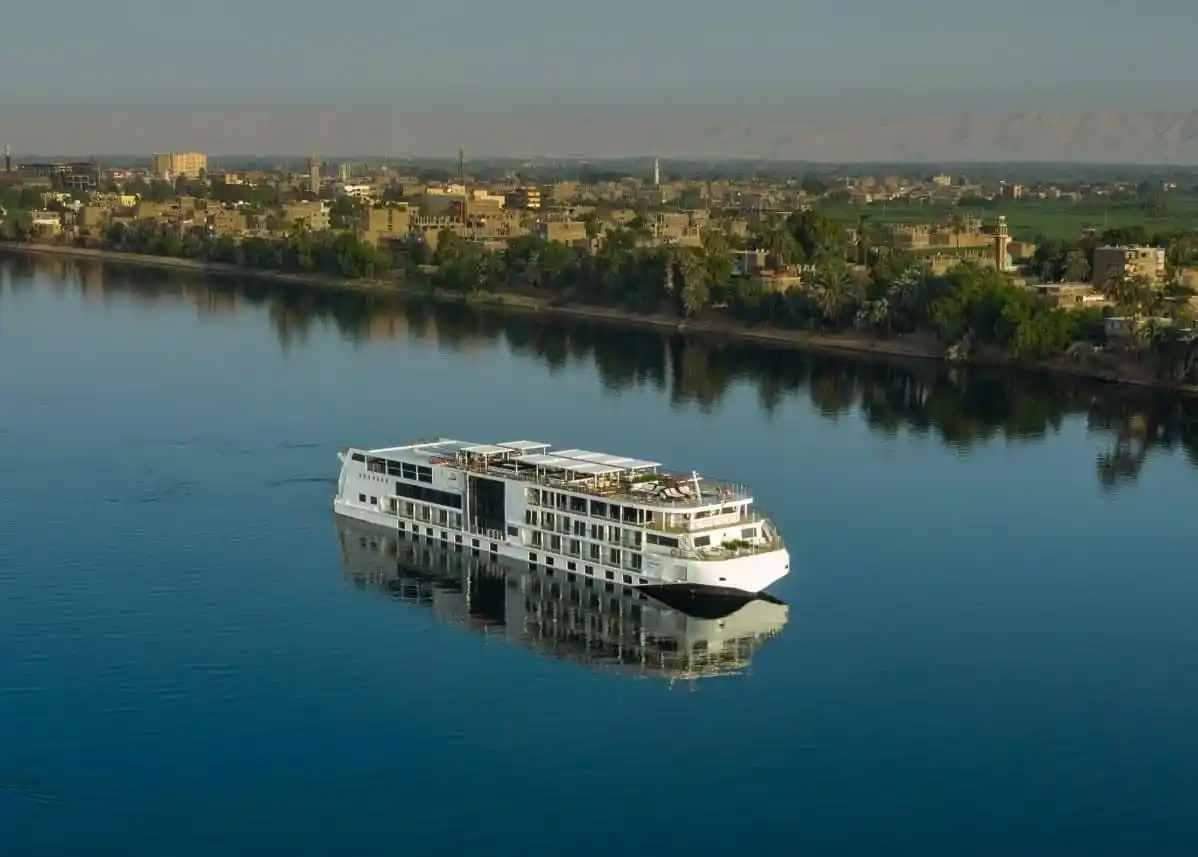
Although the Aton’s design sticks to the light colors of the Scandinavian palette overall (it’s one of the hallmarks of the cruise company, which is based in Norway), that pop of color comes in throughout the ship’s textiles and visual features, like a red brick wall in the restaurant.
“Egypt is a pretty monochromatic world other than the green right along the Nile,” Riveire says. “But if you go anywhere outside of that, it's sort of a brown place, and then you get these really bright spots of color. The red wall at the end of the restaurant was very deliberately done that way.”
Other spots in the restaurant evoke that same kind of authentic Egyptian feel. Panels along the walls, for example, have an array of wooden sticks in segmented patterns; Riveire says they’re reminiscent of the handmade wooden market crates carried throughout the country.
“I've seen the crates holding chickens and fruit, once I saw one filled with Tupperware” he says. “You know, all kinds of household goods. You see them stacked two or three levels high on the back of motorbikes a lot.”
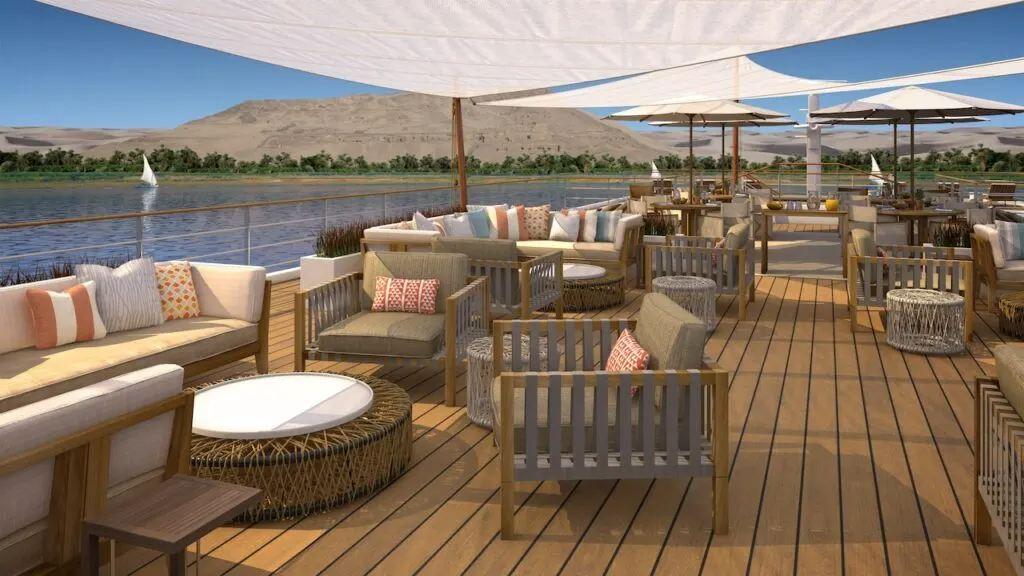
The panels in the restaurant are a stylized version, but very clearly inspired by those crates. Also in the restaurant are room divider screens near the kitchen. They’re made of dozens of flat wooden paddles strung together to make a wall. These represent the wooden peels used to pull Egyptian flatbread out of the oven. On itinerary nights where the meals focus on local foods, everything is served in dishes bought from the markets in Cairo. The clothing the waitstaff wear? Also sourced from a market in Cairo.
“They're bought locally, and they're sourced by people who know what they're doing,” Riveire says.
And that’s the whole point of the ship’s design. Even if you don’t know anything about Egyptian culture and history, you’ll still walk away with the feeling that you experienced it on the Aton.
“The art and the beauty of it is to go find those things that are the most common thing to a person who lives there,” Riveire says. “Nobody would walk through and know any of those stories. But that's okay, because you come away with a sense of authenticity. That this all feels right.”

